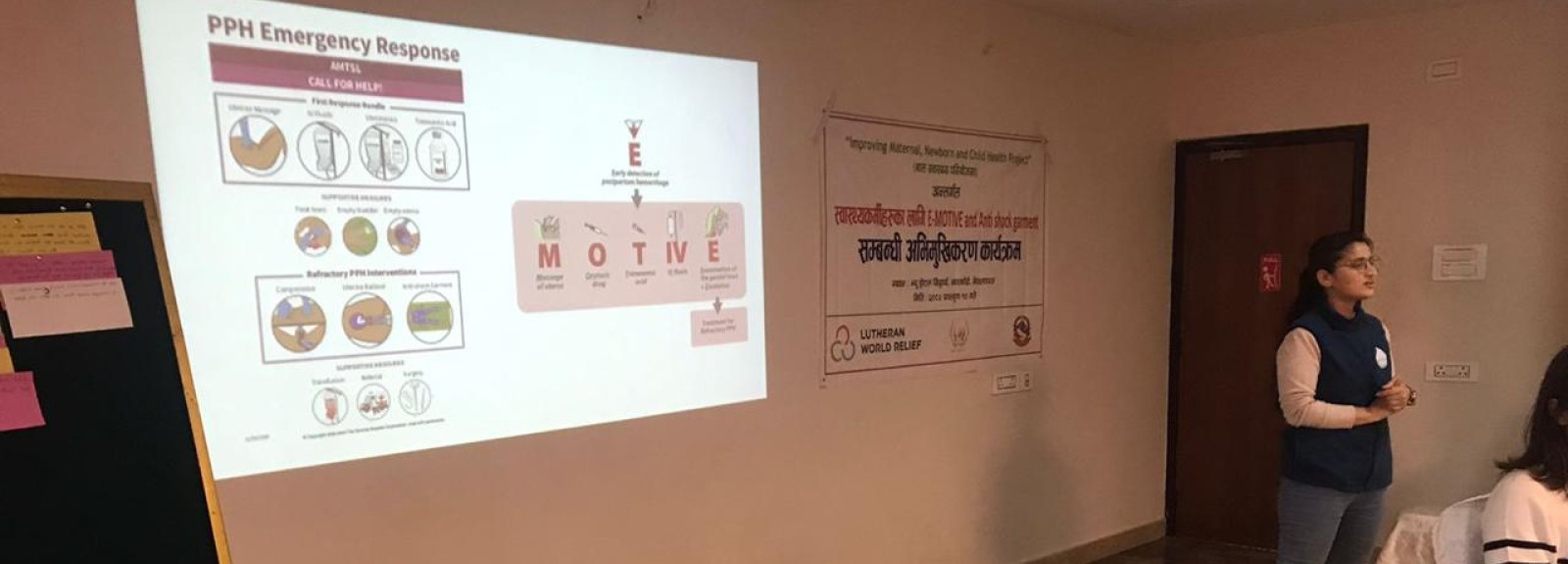Despite considerable progress, maternal, newborn, and child health (MNCH) remains a pressing public health issue in Nepal. Critical delays in seeking health care, reaching facilities and receiving quality care perpetuate high rates of maternal and newborn morbidity and mortality. Further compounding these challenges are entrenched inequalities and harmful cultural practices, such as biases in girls’ education, violence against women and girls and nutritional disparities.
Enhancing the use of essential MNCH interventions during pregnancy, childbirth and the postnatal period is crucial for improving the health outcomes of mothers and newborns. Addressing these multifaceted challenges requires a comprehensive approach involving community awareness, capacity strengthening and the integration of innovative health strategies.
Transforming MNCH outcomes through the Baal Swasthya project
Corus organizations Lutheran World Relief and IMA World Health collaborated to implement the Baal Swasthya project in Nepal. Leveraging IMA World Health’s expertise in MNCH programming, the project is designed to reduce maternal and child mortality through the improved use of evidence-based practices, enhanced capacity of health institutions and increased community awareness.
Implemented across five birthing centers in Nepalgunj Sub Metropolitan City, Banke District, the Baal Swasthya project focuses on two primary objectives:
- Raising Community Awareness: Advocacy seminars bring together health care providers, religious leaders, community elders, and other influencers to counter MNCH-related misinformation and engage community stakeholders in improving access to and utilization of evidence-based health care services.
- Strengthening the Health System: By supporting the capacity of health workers and reducing barriers to quality MNCH service delivery, the project ensures the provision of high-quality MNCH services at the ward level.
Nurse Chandra Singh practices using the non-pneumatic antishock garment (NASG) during project training.
Innovative strategies for MNCH: E-MOTIVE and NASG
Innovative components of the Baal Swasthya project include the E-MOTIVE intervention package and the non-pneumatic antishock garment (NASG) to address postpartum hemorrhage (PPH), a leading cause of maternal mortality.
The E-MOTIVE approach involves training and equipping health providers to rapidly detect and respond to PPH using a drape to collect and measure blood loss. This is implemented alongside a clinical bundle of first-response treatments. To complement the E-MOTIVE training, the project is piloting the NASG as an accessible first-aid device that limits PPH. By compressing the lower body to redirect blood flow to essential organs, the NASG can keep a woman with PPH alive for up to two days. This allows for critical time to transfer the patient to a health care facility for further treatment. Without the garment, severe bleeding could lead to death within 30 minutes.
By partnering with the Nepal Society of Obstetricians and Gynecologists (NESOG), Baal Swasthya has strengthened the capacity of health care workers to implement the E-MOTIVE package and utilize the NASG in clinical settings. Nurses and auxiliary nurse midwives from Bheri Hospital and five targeted birthing centers in Nepalgunj Sub Metropolitan City were trained by Dr. Smrity Maskey, NESOG’s Joint Secretary, as well as Dr. Anjana Adhikari, NESOG Member. Through comprehensive sessions that included informative lectures, hands-on practice and interactive discussions, providers learned to effectively manage obstetric hemorrhage and shock cases. Additionally, the project has provided essential medical equipment, contributing to enhanced health care practices and outcomes.
Puspa Oli, a nurse from the Udaypur birthing center, shared, "I've noticed a significant improvement in my ability to manage and detect PPH early. I feel more confident in recognizing the signs and symptoms, which has enabled me to respond promptly and effectively in critical situations.’’
Nurse Puspa Oli practices using the non-pneumatic antishock garment (NASG) during project training.
A leap forward in MNCH
The Baal Swasthya project exemplifies the transformative impact that evidence-based practices and community engagement can have on MNCH outcomes in Nepal. By empowering frontline health care providers with the necessary knowledge and skills, the program contributes to reducing maternal mortality and morbidity rates in resource-limited settings.

